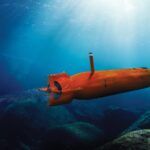Experts from 10 EDA Member States as well as from Norway and Switzerland recently participated in an online workshop organised by the Agency to assess and discuss technological and operational aspects of High-Power Electromagnetic Munitions (HPEM).
This workshop was part of an ongoing EDA study on High Power Electromagnetic Munitions which aims to compile a comprehensive collection of HPEM concepts, working principles and key components. Launched in April of this year and expected to be completed in October 2021, the study will assess the key technology gaps and associated scientific challenges to develop future HPEM, with the aim to defeat electronics onboard systems deployed to future battlefield. Additionally, it will offer an overview of the European supply chain capabilities in this field, including its possible dependencies. It will also make recommendations how military users could best benefit from the opportunities HPEM will offer for future warfare. Finally, the study will also help to better understand the HPEM-related vulnerabilities of military systems equipped with electronics, and identify areas where improvements are needed to toughen up future military equipment when facing HPEM threats.
Modern military equipment heavily relies on advanced electronic systems, which greatly contributes to optimising and, in most cases, enhancing crucial functions such as detection, identification, communication, engagement and protection. However, the widespread usage of electronics in defence equipment can also make the military forces more vulnerable, especially when facing Electromagnetic Pulse threats.
Follow-up workshop planned
The first workshop on 1/2 October gathered no less than 77 subject matter experts from EDA participant Member States plus Switzerland and Norway (which have concluded Administrative Agreements with the Agency) who had lively discussions and brainstorm sessions in the different virtual tables. Representatives from the various Ministries of Defence but also from academia, research and technology organisations and industry had the opportunity to share their views and positions which will flow into the upcoming EDA study.
A second workshop is planned for spring 2021. It will be mainly focused on discussing, validating and complementing the concepts of HPEM and scenarios, as well as on the identification of the requirements of HPEM from a user point of view.
One of the first tangible results of the first workshop was the establishment of a European network of HPEM experts available to MODs and EDA for potential follow-on activities.
Background
The ongoing EDA HPEM study is expected to inform participating Member States’ MODs on innovative High-Power Electromagnetic Munition (HPEM) concepts able to disrupt military equipment on the battlefield by debilitating critical electronics in numerous mission-critical equipment (e.g. communication systems, radars, unmanned vehicles, electric grid, computers, sensors, …).
Such HPEM should be able to defeat or destroy electronic systems within a large spectrum of operational scenarios. Depending on these scenarios, Electromagnetic Pulse or Electronic Warfare warheads could be integrated in missiles, munitions and submunitions, or even drones to offer opportunities not available with conventional warheads.
To conduct this study, a contract was awarded to the Fraunhofer-Gesellschaft, Germany, represented by its Institutes INT (Fraunhofer-Institute for Technological Trend Analysis, coordinating) and EMI (Fraunhofer-Institute for High-Speed Dynamics, Ernst-Mach-Institute); the project is expected to run 18 months, from end of April 2020 to end of October 2021.
This study is developed in the remit of EDA CapTech Missiles & Munitions and CapTech Components. Additional information on the CapTechs work can be found via the hyperlinks.







Leave a Reply